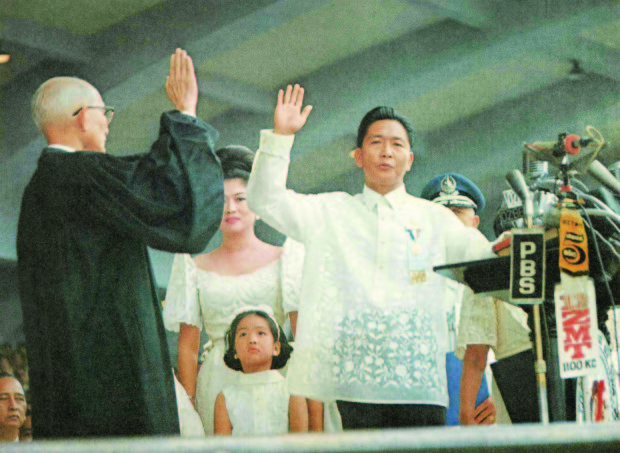Marcos: Rise and fall of a dictator
Few leaders began their presidency with such promise and ended in such ignominy as the Philippines’ Ferdinand Marcos.
Born in 1917 to a prominent political family in rural Ilocos Norte, Marcos easily won the 1965 presidential election widely regarded as a fair contest with an abundance of charisma and superb oratory skills.
He could also credit his wife, beauty queen Imelda Marcos, whom he married in 1954 and whose glamor and singing voice helped attract crowds to his campaign rallies.
The magnetic couple also proved irresistible to the United States, which during the time of the Vietnam War saw Marcos as an important ally in its efforts to quash the communist threat in Southeast Asia.
Marcos was reelected to a second four-year term in a landslide in 1969, but allegations of corruption and authoritarianism had already begun to cloud his presidency.
Martial law
Then in 1972, to the shock of the nation, Marcos declared martial law, saying it was needed to save the country from communist insurgents.
By doing so he could stay in power longer than the constitutionally mandated limit of eight years.
With the continued backing of the United States, the Philippines’ former colonial ruler, Marcos ruthlessly moved to stamp out dissent.
Television, radio stations and newspapers were only allowed to promote his “New Society,” so the public was fed a constant stream of praise for Marcos and his jet-setting wife, whose extravagance was a sharp contrast to the poverty of most Filipinos.
Opposition politicians, including Marcos’ archcritic, Sen. Benigno Aquino Jr., as well as student leaders and other dissidents, were thrown behind bars, as the Philippines descended into a climate of fear.
“The Marcos government appears, by any standard, exceptional for both the quantity and quality of its violence,” wrote American academic Alfred McCoy, one of the preeminent historians on the Philippines.
McCoy said the regime’s security forces killed 3,257 people, many of the victims first abducted, then abused and finally murdered and dumped on a roadside in a warning to others.
An additional 35,000 were tortured and 70,000 were unfairly imprisoned under Marcos, according to McCoy.
‘People Power’
Behind closed doors, Filipinos whispered about how Marcos, his relatives and cronies had seized control of the economy, monopolized key industries, skimmed off money from foreign debt-funded infrastructure projects and stashed the wealth abroad.
The end for Marcos began when Aquino, who had been allowed to go to the United States for medical treatment, returned to the Philippines in 1983, seeking to convince his old rival to step down peacefully.
Marcos troops gunned him down as he was descending from the plane at Manila airport in an act that enraged the public.
Slowly, more and more Filipinos found their voice, denouncing Marcos. This culminated in a popular revolt in 1986 led by Aquino’s widow, Corazon, that sent the ailing Marcos and his family fleeing to Hawaii, finally restoring democracy to the Philippines.
In the wake of the peaceful “People Power” uprising, the carefully manufactured image of a courageous war hero-turned-leader concerned only for his people quickly fell apart, and his wife became a figure of ridicule.
The crowds that surged into Malacañang, the presidential palace, found a trove of 3,000 shoes belonging to Imelda, which became enduring symbols of extravagance as more evidence of corruption was uncovered.
State coffers plundered
Government investigators subsequently found that, while the country wallowed in poverty, the Marcos family had plundered about $10 billion from state coffers.
Marcos died in Hawaii in 1989 as one of the most despised rulers of the Philippines, although his family returned after his death and were able to start rehabilitating his reputation.
The astonishing comeback was sealed yesterday when the dictator was finally buried at Libingan ng mga Bayani, after the Supreme Court endorsed a decision by President Duterte, a friend of the Marcos family, to allow the burial. —AFP
